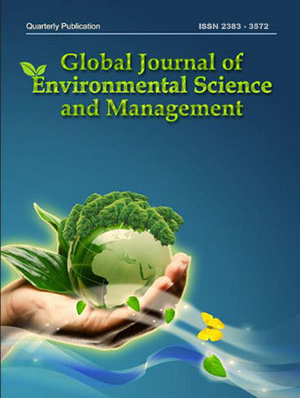Document Type : ORIGINAL RESEARCH ARTICLE
Authors
Department of Environmental Science, College of Forestry and Environmental Science, Central Mindanao University, University Town, Musuan, Bukidnon, Philippines
Abstract
Giant bamboo Dendrocalamus asper is recommended in environmental and livelihood programs in the Philippines due to its various ecological, economic and social benefits. However, there are limited data on the ecology of giant bamboo litterfall production, which contributes to soil nutrient availability. Bamboo also contributed in carbon sequestration. The study was conducted within the Taganibong Watershed in Bukidnon, Philippines. Nine litterfall traps measuring 1mx1m were established within the giant bamboo stand in the study area. Results show that giant bamboo litterfall is dominated by leaves. Biological characteristics of bamboo litterfall do no not influence litterfall production but temperature, wind speed and humidity correlate with the amount of litterfall. Findings of the study further revealed that fresh giant bamboo tissue contains high carbon content and the soil in the bamboo stand has higher organic matter than the open clearing. These data indicate the role of giant bamboo in carbon sequestration and soil nutrient availability.
Graphical Abstract
Highlights
- Temperature, wind speed and humidity correlated with the amount of litterfall
- Fresh giant bamboo tissue contained high carbon content and the soil in the bamboo stand had higher organic matter
- The amount of carbon in giant bamboo tissues and nutrients in the soil of the giant bamboo stand indicated its role in carbon sequestration and soil nutrient availability.
Keywords
Main Subjects



Letters to Editor
[1] Letters that include statements of statistics, facts, research, or theories should include appropriate references, although more than three are discouraged.
[2] Letters that are personal attacks on an author rather than thoughtful criticism of the author’s ideas will not be considered for publication.
[3] Letters can be no more than 300 words in length.
[4] Letter writers should include a statement at the beginning of the letter stating that it is being submitted either for publication or not.
[5] Anonymous letters will not be considered.
[6] Letter writers must include their city and state of residence or work.
[7] Letters will be edited for clarity and length.
Send comment about this article